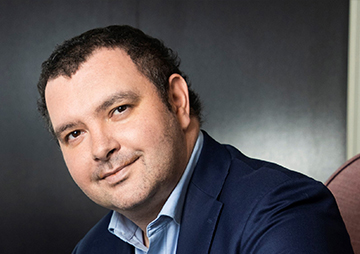- Home
- Studies and research
- Real Estate and lifecycle: senior housing and nursing home
Property and life cycles
The European population of over 65s (excluding the United Kingdom) will grow from 92 million in 2020 to 108 million in 2030
Changes to the dependence ratio are highlighting the transition towards a more aged demographic structure. The increasing average age of the population will therefore lead to a greater number of aged, dependent citizens. This loss of independence must be accompanied by assistance or treatment, especially for individuals over the age of 80 whose numbers in Europe will increase from 26.9 million in 2020 to 32.6 million in 2030. These demographic changes will feed a significant demand for retirement homes and/or residential care homes
YouTube will only allow users to watch its videos if they accept the installing of trackers so that they can be shown targeted advertising according to their browsing history. You have rejected marketing cookies, including from YouTube. If you accept marketing cookies, trackers will be installed and you will be able to watch the video. You may withdraw your consent at any time by visiting our personal data and cookie policy page.
Change my consent preferences
La démographie des seniors : un enjeu de société à l’échelle de l’Europe
La structure sociologique de la famille influence le rapport de la prise en charge des personnes âgées. Cette tendance a été confirmé par une étude Primonial REIM/BVA qui met en lumière de fortes disparités concernant l’anticipation du vieillissement en Europe.
Selon ce sondage, il ressort que les clivages culturels jouent un rôle important. Par exemple, les Français comptent en priorité sur eux-mêmes pour prendre des mesures d’accompagnement à la vieillesse, les Espagnols se reposent d’abord sur leur conjoint et les Italiens préfèrent le soutien de leurs enfants.
However, generally speaking, it was noted that institutional and social support for the aged is very strong in Europe, since the Covid-19 crisis there has been an increases in healthcare expenditure. If the degree to which the various individual nations intervene in providing care for their aged varies greatly, the European Union will be attributing €9.4 billion of additional investment in the healthcare sector over the next few years in order to improve coordination and harmonise the differences between the different healthcare systems.
The European retirement home and residential care home investment market
The retirement home and residential care home market has shown continued growth as a result of the sector’s business’ significant need for development support. Whilst between 2010 and 2015, the market did not exceed more than €4 billion per year, 2016 was a major turning point in investment strategies since more than €6 billion per year was invested that year.
Consequently for the whole of the 2010-2019 period, €37.5 billion was invested in Europe making retirement home and residential care homes an essential asset in international investment strategies. The largest European healthcare markets have been the United Kingdom, Germany, France, Sweden and Holland.
Our analytical table for European retirement home and residential care home investment
The social and corporate stakes raised by the ageing of the population will require billions of euros in investment that must be distributed between the public and the private sector. In order to identify the most attractive markets, we have analysed a number of different criteria (demographic, sociological, real-estate, etc.).
We have attributed scores to the various markets analysed. The model identifies 3 major market categories. France, Germany and Holland are the countries with the most attractive return/risk relationship. Spain, Northern Italy, Finland, Belgium and Austria are more balanced markets. And finally, Portugal, Ireland and Poland, for example, are markets where the opportunities may become interesting as they develop.
For retirement homes and residential care homes, we recommend prioritising:
• an international operator in countries where healthcare coverage is strong or, failing this, in regions where the purchase power of the aged is high;
• the quality of the properties and locations in city-centres or near to major urban centres to guarantee capital returns when the asset is sold;
• limiting exposure to badly situated or designed retirement homes or residential care homes in zones subject to high climate-related risks.
1 Perception des seniors sur le 4e âge. (How the aged see their dependence) Survey completed by the BVA Institute involving 4,000 retired people in France, Germany, Spain and Italy, completed via the internet between 17 July and 3 August 2018.
The team

With a university education in local economic development, Daniel While began his career as business establishment consultant to local authorities. In 2006, he joined the Institut de l’Epargne immobilière et Foncière as analyst, and specialised in the world of unlisted real estate funds (SCPIs and OPCIs for France).
He is co-author of the book Les OPCI published by Delmas (September 2008). He joined Primonial REIM in 2017, where he held the position of Development Director, then Research & Strategy Director from 2019.

Henry-Aurélien Natter joined Primonial REIM as Research Manager in January 2018. He has the mission of developing the analyses of the Research & Strategy Department on the real estate markets, the economy and capital in France and in Europe.
Henry-Aurélien Natter began his career at Les Echos Etudes (formerly Eurostaf), then at C&W (formerly DTZ), and lastly at BNP PRE, where he acquired solid and varied experience in real estate research, strategy and finance. He is qualified with an AES degree in Business Management, a Masters Decree in management and SME management, and an International Master in commerce and marketing.
You may also like

- Thematic study
Real Estate and lifecycle : Investment strategies for new residential markets
Life is a cycle and residential property must meet individuals’ expectations based on their needs at each moment of their lives. In a multi-generational society, housing must therefore adapt to the needs of several generations in student, single- and multifamily, and senior housing and nursing homes.

- Thematic study
Real Estate and lifecycle : the student housing market
The student housing market is expanding fast. From an annual average of €2.3bn from 2010 to 2014, investments tripled to €7.3bn from 2015 to 2019.

- Thematic study
Real Estate and lifecycle : the single and multi-family housing market
One such shift is the increasing number of households and their decreasing size. This trend is expected to continue as lifestyles evolve, with more separations, fewer large families, etc., and this will inevitably expand demand for housing.


 et Firefox
et Firefox 